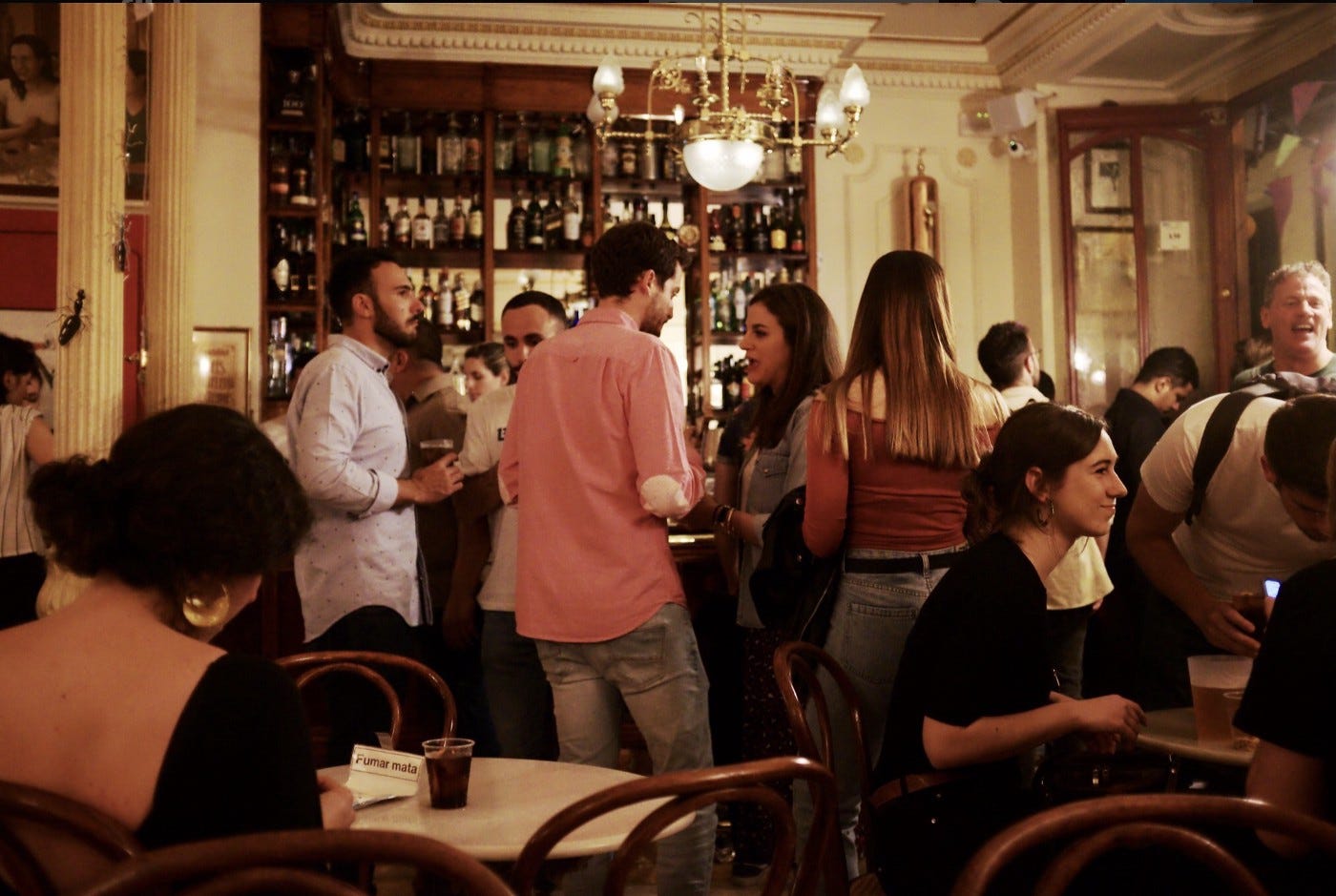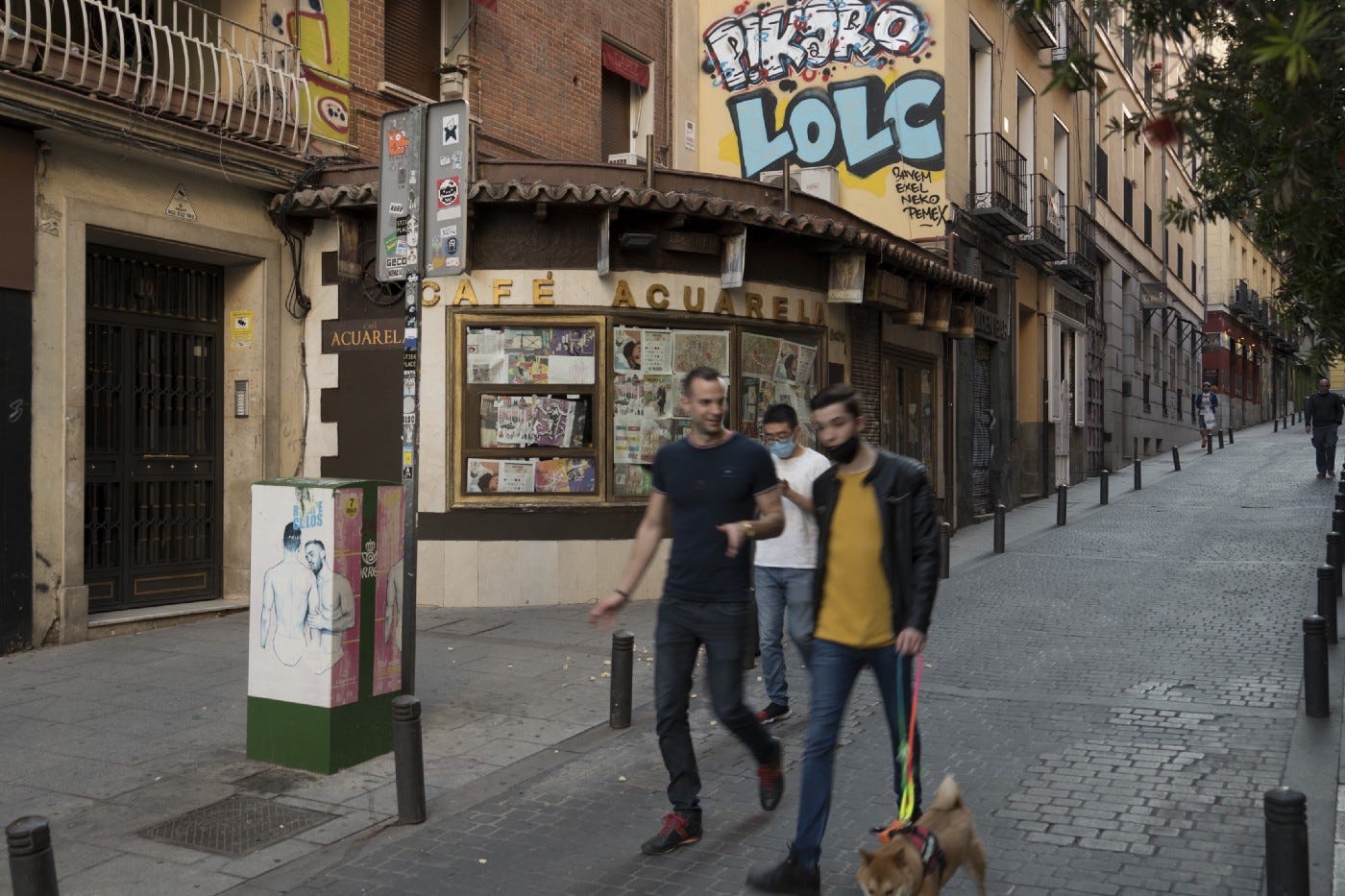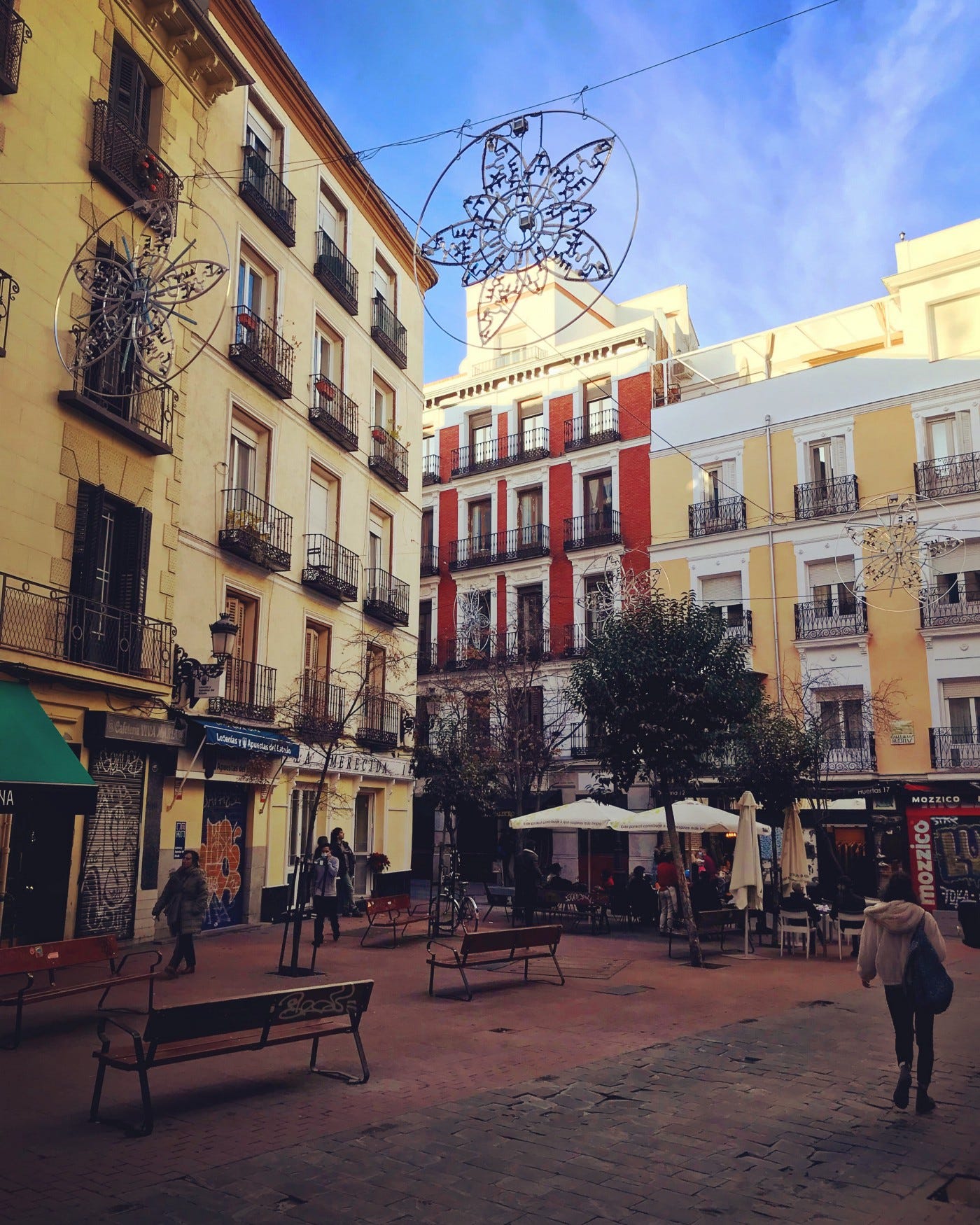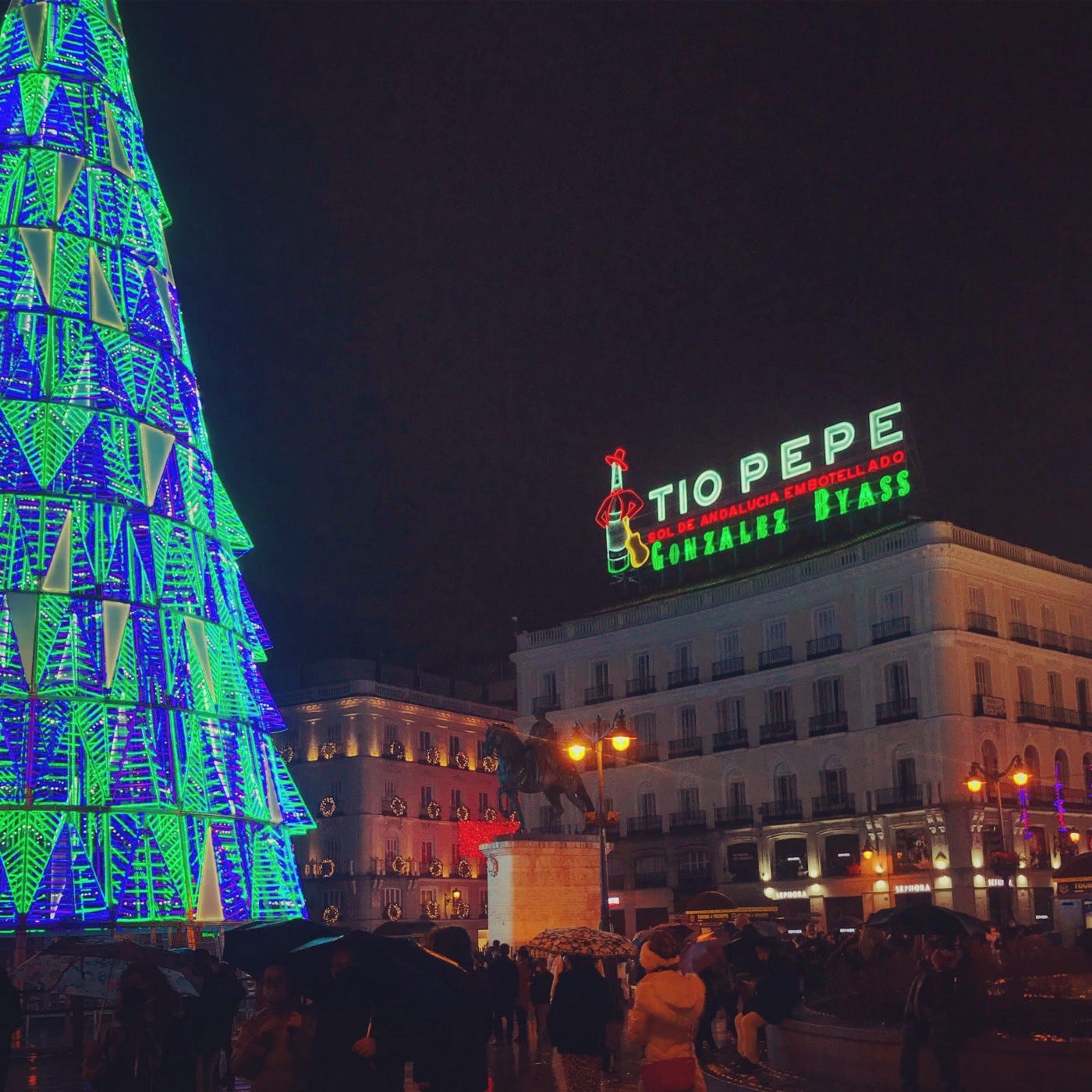Madrid Is the Best City in Europe
It’s not the prettiest or the most quaint, but the people make it great

Madrid is a scruffy capital city in many ways, but it also has grand palaces and boulevards that can compete with Paris for grandeur and elegance. It’s touristy heart is all but left to the tourists, but if you look harder, you can spot the local layer that permeates beneath the red double decker tour bus stops and shitty overpriced paella and sangria joints — two things that were never traditionally consumed in the capital.
Locals fill the entire city, with the possible exception of Plaza Mayor, which if used by locals, is often focused on children and grandparents visiting pop-up markets and eating at average restaurants with excellent locations. My grandfather always said, “Don’t eat at a restaurant for its view,” and this adage is surely true of Plaza Mayor. In a city of dynamic cuisine from all over the world, it’s just stupid to spend more time here than a quick stroll through.
People in Madrid don’t live, so much as they celebrate. Everything they do, it seems, is just required work and planning for more celebration. This celebration isn’t always full on partying, or dancing in a club on cocaine, but there is surely a lot of this, too. Much of this celebration of life is being on the streets, being in cafés and bars — just being out.
This is no doubt partially rooted in the la Movida movement, which took hold in the Spanish capital in the 1970s and ‘80s after decades of being controlled by Francisco Franco, a true blue fascist dictator who ruled Spain for almost 40 years. La Movidameant vibrancy — moving, living, drinking, dancing, talking — on the streets. After decades of being shut in out of fear for offending the authoritarian rulers of the country, Madrileños were ready to be out of their apartments. They were hot to trot. The parties were legendary. Afternoons blended into evenings into the dark of night and into the morning, and still, the drag queens were performing, the people were filling in the spaces of their freedom to its outer boundaries. Life was for being lived.
This sensibility is still felt in the capital, and it still infuses the city with a fiesta atmosphere. You may ask: how does a city party all the time and still get things done? I truly don’t know, is the short answer. I am continually amazed in Madrid how many people are constantly filling the outdoor terraces of the cafés and bars. There’s a seeming never-ending parade of café sitters, hangers out, sipping coffee and then — always — moving on to beer or wine or tinto verano, or vermouth, or how about a pint sized gin and tonic? You see those on every terrace. In short, things do get done and the Spanish, on average, work longer hours than Germans. I think it’s just that they spend very little time holed up at home, so it seems like no one’s working, when in London or Hamburg, people spend a lot more time at home, so they’re hidden away from view.
Madrid is the best people watching city on earth in my opinion, at least partially because of this penchant for always being out. Sure, Paris is fun — the fashion can be extreme, but more often than not, Parisians are conformers — where Madrileños are more eccentric. There is no required outfit for being cool in the city. You can wear sweatpants, shorts, or a $10,000 suit and all are accepted. I’ve seen some of the most eccentric people on earth in this city, but they do it in an integral and low key way. Many of these wonderful weirdoes are Spanish of course, but about 25% of the city’s population is foreign born, so you also see people from all over the world, from uptight British gentlemen in Saville Row tailoring to insanely cutting edge Japanese women who have their finger on the pulse of the avant garde.
This open culture is at least partially because Madrid, unlike many of the world’s great big cities, is exceptionally chill. This may be its greatest quality. As a naturally shy person who speaks Spanish but not very well, I am often used to shying away from trying new places — new cafés, bars, and shops — but in Madrid, I’ve never been met with anything but a welcome smile, and a chill one at that. No one looks up when you enter, and the people that work most places just want to help. Spaniards are not snobbish about their language in the slightest. They appreciate you trying to speak it, but if you can’t, they figure out how to understand you. I find this is a quality of most places that have had occupying forces, as the Spanish did for a thousand years under a Moorish caliphate.
I lived in Berlin for three years until I left about a year ago, mid lockdown. Madrid and Berlin have a lot of similarities — openness in cultures and lifestyles, lots of partying, art, and to a certain extent, café life, though Madrid has much more of this. Anyway, in Berlin, where it is notoriously difficult to make friends, I often frequented the same craft beer bar, seeing the locals and the owners and employees several times a week, but it was not until after a full year that a friendship first began, which led to further friendships that I still cherish today. The same situation in Madrid resulted in friends after only a few fun nights out. Sure I may never see them again, but then again, maybe I will. Friends are easy to come by in Madrid, and it seems that most poeples’ social circles are not “filled.” They’re open to new people, new experiences, and new cultures. I’ve never experienced this like I have in Madrid anywhere.
Madrid is a very green city. Full sized trees are everywhere, filling plazas and lining streets. Most people don’t realize this before they come to the Spanish capital. This is partially due to the fact that Madrid gets hot — very hot — in the summer. This is perhaps the biggest downside in terms of ease of living here. Locals will say you can do chores in the morning and after the sun has set, and that the siesta is designed to avoid the hottest part of the day, but it’s not true. You will sweat your ass off and the sun will feel like it’s burning your skin to the bone. Luckily, they have air conditioning here, which is something you can’t say about Paris or Berlin, two cities that now also regularly get too hot in the summer months.
Madrid embraces small businesses and innovation. Using craft beer as an example, I’ve heard myriad horror stories about young Germans trying to innovate their vaunted beer culture, only to be shut down because the customers like the traditional beers — the pilsners and lagers. In Madrid, you can take chances because the locals aren’t limited by what they feel should be. There is no “should” in the modern Madrileño mindset. Put a bar in an old cinema and sell arepas? Sure. Open a book store focusing on Japanese trains? Why not? Open a taco place in a gay sauna? Sure, if it’s good.
Madrid is well connected to many different regions and cultures. Spain, as you may know, is more a collection of independent communities than a unified country, at least culturally. The north is green and mellow, with cider houses and old stone cities on the cold sea. Catalunya has its own language and a world class food culture. Andalusia has flamenco, beach resorts, and ancient Roman ruins. From Madrid, you can access all of these different types of place — that feel like different countries really — on high speed trains. The AVE (Alta Velocidad Española) trains reach speeds of 310 kilometers per hour and can deliver you comfortably all over the country within hours. The places you can go for even a short weekend trip is an embarrassment of riches — ancient places with modern hearts, from Segovia to Barcelona to Cadiz to Valencia. They’re all easy to get to from Madrid.

But back to the people — the Madrileños themselves. They are open, they are kind, they are friendly, they are welcoming, and they will be your friend if you deserve to be friends with. And they’re sexy people — I’ve never seen a collective group of such attractive people in all my life — not in New York, Los Angeles, London, Tokyo, Milan, or Berlin. Luckily, they don’t seem to know this, and I’ve never encountered a single snobbish person in Madrid. Of course they exist, but if you can go for weeks at a time without encountering them, the odds are adding up in your favor.







